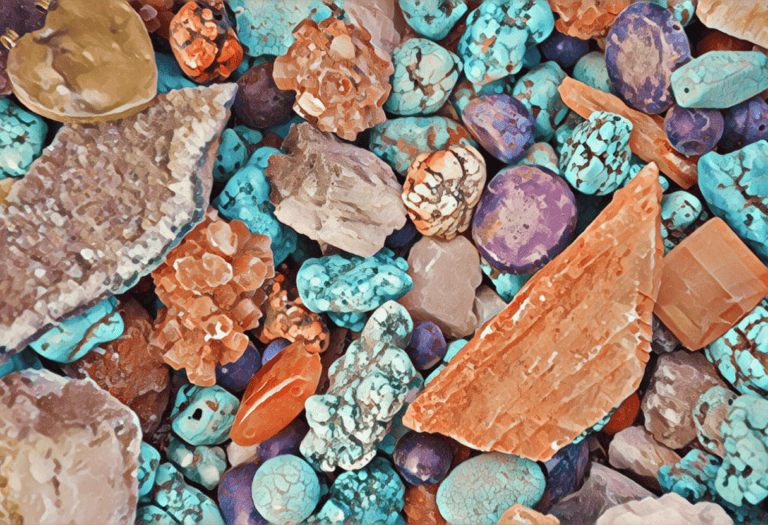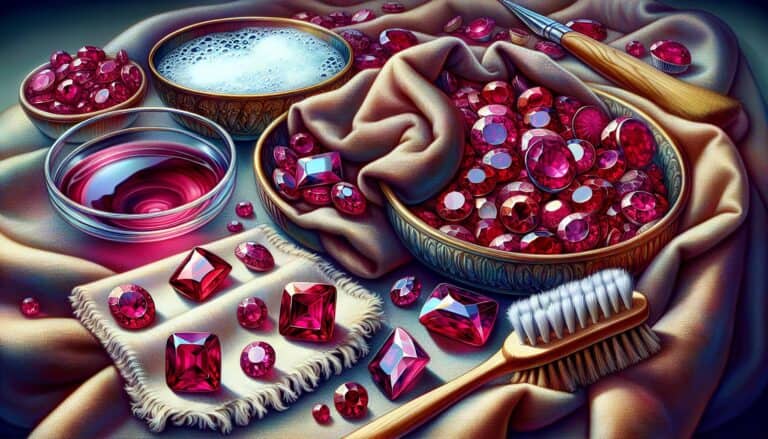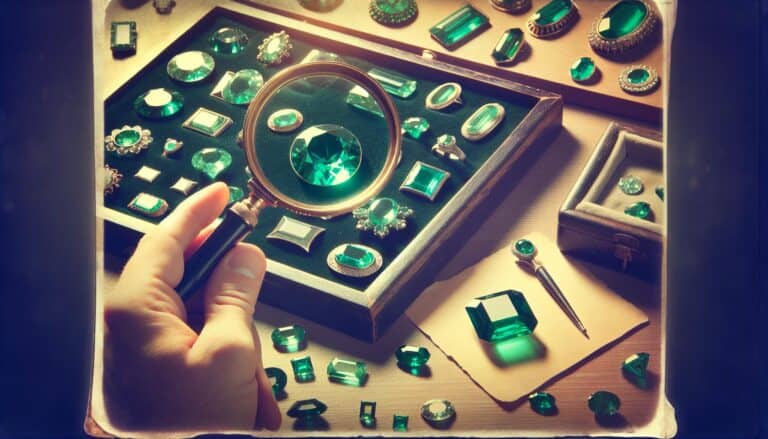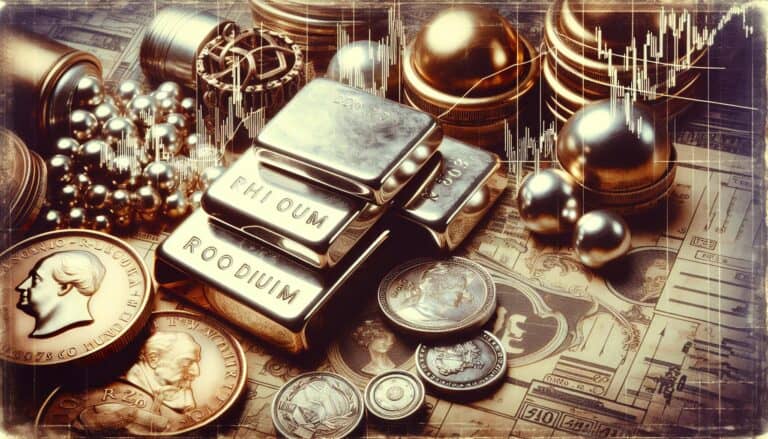Have you ever gazed upon the serene blue of celestite and wondered about its value?
You’re not alone. Celestite, with its calming hues and striking crystal formations, is a favorite among mineral collectors and holistic enthusiasts alike.
Determining celestite’s worth isn’t as straightforward as checking a price tag; it’s influenced by a variety of factors, from size and quality to rarity and origin.
Let’s dive into what makes celestite so special and explore the nuances that dictate its price in the market.
Celestite’s value is determined by color, clarity, size, rarity, and origin. The most sought-after celestite features vivid blue hues, large clear specimens, and originates from limited locations like Madagascar and Ohio. Rarity and quality extraction processes further enhance its worth, making informed purchasing crucial for collectors and investors.
What is Celestite?
Celestite, also known as celestine, is a mineral revered not only for its ethereal blue hue but also for its various uses. Strontium sulfate is its primary chemical composition, which lends to its signature pale blue color, although it can also be found in white, pink, green, and brown. I’ve always found its delicate shimmer and transparency quite enchanting, qualities that make it popular among mineral enthusiasts.
Traditionally, celestite is known for its occurrence in sedimentary rocks, particularly gypsum and limestone, where it forms as crystal-lined geodes. These geodes, often hollow with crystal interiors, are sought after by collectors and decorators alike for their natural beauty.
Beyond aesthetics, celestite holds industrial significance. It serves as a source of strontium, which is used in the production of fireworks, as well as in various metal alloys. I’ve seen it applied in the medical field too, particularly in the creation of medical imaging devices. This versatility adds to the mineral’s value and demand.
In the context of metaphysical properties, many users believe in celestite’s calming energy, claiming it aids in spiritual connection and inner peace. Holistic wellness circles often incorporate celestite into various healing practices, although this is based more on personal belief than scientific evidence.
With its unique attributes and applications, celestite’s value extends beyond the physical realm into cultural and industrial significance. This multifaceted nature contributes to determining its worth, which, as previously mentioned, is variable and depends on several factors.
The Value of Celestite
When we delve into the monetary value of celestite, we must consider several factors that influence its price. The size, quality, and clarity of the celestite specimen are the primary determinants of its worth. Larger geodes lined with well-formed, clear crystals can fetch higher prices. Rare specimens with exceptional vividness or unique formations are particularly valuable among collectors. Even the location of the mine can play a role in a piece’s value due to the purity and color of the celestite found there.
To give you an idea of the range in value, smaller, less distinctive pieces may sell for as little as $2 to $5 per gram. On the other hand, high-quality larger pieces used for decorative purposes can command prices upwards of $100. In the commercial industry, where celestite is prized for its strontium content, bulk pricing can vary widely depending on the demand for strontium in manufacturing.
| Quality | Price Range |
|---|---|
| Low | $2 – $5/g |
| High (Decor) | $100+ |
| Industrial | Varies |
Retailers and metaphysical shops may price their celestite products not only on these factors but also based on its purported healing properties. The belief in celestite’s ability to provide spiritual benefits can add a premium to its price, especially in niche markets.
Purchasing celestite wholesale can also affect its cost. Wholesale deals are typically reserved for larger quantities, where buyers may obtain lower rates per gram than in retail.
Exploring how to determine a fair price for celestite involves more than just numerical data. Market trends, collector demand, and the economic landscape all play parts in the pricing puzzle. Fluctuations in the cost of strontium production due to mining regulations or changes in industrial applications likewise impact the overall worth of this stunning mineral.
Factors Affecting Celestite’s Worth
When determining the value of celestite, there are several key factors to consider. My expertise has shown me that the first, and perhaps most obvious, is quality. High-quality celestite crystals, which are transparent and free of impurities or flaws, often fetch the highest prices. These crystals are coveted for their beauty and rarity, making them a prime choice for collectors.
Another important aspect is the size of the specimen. Large, well-formed celestite crystals and geodes are particularly sought after in the market. As a rule of thumb, the bigger the specimen, the higher the potential worth, especially if it possesses exceptional clarity and color. Here’s a rundown of how size can influence celestite’s value:
| Size Range | Description | Potential Impact on Worth |
|---|---|---|
| Small | Under 5 cm | Typically lower value |
| Medium | 5 – 10 cm | Mid-range value |
| Large | Over 10 cm | Higher potential worth |
Location is also a significant factor; celestite from certain locales can be more valuable. For instance, specimens from Madagascar are often considered superior due to their color and crystal structure. Likewise, celestite from classic localities such as those in the United Kingdom may have historical value that bolsters their worth.
In addition to these attributes, let’s talk about the market’s supply and demand. Limited availability and high demand can drive up celestite’s price, particularly for exceptional pieces. On the other hand, if the market is saturated with similar specimens, prices may stagnate or even decline.
Understanding the industrial demand for strontium—primarily derived from celestite—sheds light on more pragmatic aspects of valuation. Industries can influence the bulk market price for celestite based on their need for strontium in various applications, from fireworks to metal alloys.
Lastly, don’t overlook the role of metaphysical properties. Although not universally accepted or scientifically proven, many believe in celestite’s ability to promote calmness and spiritual connection. This belief system creates a niche market where celestite’s purported healing properties can significantly affect its price tag among enthusiasts.
Size and Quality
When examining celestite’s value, I always pay close attention to size and quality, which are paramount. Larger pieces of celestite obviously draw more attention due to their impressive display capabilities. However, not all large specimens command the highest prices—it’s the combination of size and high-quality characteristics that truly sets the price point.
Quality encompasses several factors, such as the intensity and appeal of the blue color, the clarity of the crystals, and the overall aesthetic of the specimen. Crystals that are clear with vibrant coloration generally fetch higher prices. Also, celestite without noticeable damage or defects is more desirable to collectors and thus more valuable. The geode’s structure, where celestite crystals have naturally formed, can also impact the price, especially if the formation is unique or particularly aesthetic.
To provide a clearer picture, let’s look at some typical ranges for different sizes and qualities of celestite, bearing in mind that these figures can fluctuate based on market dynamics:
| Size (Grams) | Average Quality Price ($/Gram) | High Quality Price ($/Gram) |
|---|---|---|
| 20 – 50 | 3 – 5 | 5 – 8 |
| 100 – 500 | 2 – 4 | 6 – 10 |
| 500+ | 1.5 – 3 | 4 – 6 |
Remember, these prices are for raw, unpolished stones. Polished specimens or those prepared for jewelry or display can sell for considerably more. Moreover, a celestite’s origin can add to its allure and price tag. For instance, celestite from Madagascar is renowned for its quality and can command premium prices. By contrast, more common varieties from other locations might be valued less, regardless of size or quality.
This relationship between size, quality, and origin creates a complex market where I always recommend to buyers and sellers alike that thorough research and expert valuations will help in determining a fair market price. After all, the true worth of celestite, like any other collectible, is what a buyer is willing to pay for it based on a combination of these critical factors.
Rarity and Origin
When determining the value of celestite, rarity plays a pivotal role. This mineral isn’t evenly distributed around the globe, which means its availability can greatly influence its price. Some of the most sought-after celestite comes from Madagascar, known for its superb quality and intense coloration. Similarly, specimens from Ohio, particularly those from the Crystal Cave, are prized for their large geodes and crystal clarity.
Celestite occurs in a variety of geological settings, from ancient sea beds to sedimentary rock formations. Madagascar and Ohio are two well-known locations, but celestite can also be found in places like Egypt, Germany, Mexico, and the UK. Each locality produces celestite with distinct characteristics that affect its collectability and value.
| Location | Characteristics | Known For |
|---|---|---|
| Madagascar | Intense blue coloration | Superb quality |
| Ohio | Large geodes, clear crystals | Size and clarity of specimens |
| Other Locations | Varying hues and crystal forms | Unique geological formations and quality |
Moreover, the process through which celestite is extracted can affect its value. Artisanal mining methods that ensure minimal damage to the crystals often result in higher prices due to the pristine condition of the mined specimens. In contrast, commercial extraction methods may lead to more abundant but less perfect specimens, which can lower the mineral’s market value.
As a collector or investor, it’s important to research the origin and extraction method of celestite before purchasing. This knowledge not only helps estimate the mineral’s worth but also ensures a more ethical and informed buying decision.
The existence of natural reserves and operational mines can change over time, impacting the availability of high-quality celestite. Market accessibility to these sources is another factor that I pay attention to, as it helps me understand how supply might shift in the future and subsequently affect pricing. Ensuring I’m up to date with the latest news from these mining sites enables me to give informed advice on celestite’s current market value and its potential investment return.
Given these aspects, it’s clear to see how the origin and rarity of celestite specimens are intrinsically linked to their monetary worth. They highlight the significance of provenance when valuing minerals, something that enthusiasts and casual buyers alike should not overlook.
Conclusion: Buying & Selling Celestite
Determining the worth of celestite boils down to a combination of factors such as rarity origin and extraction quality.
As a collector or investor, it’s essential to stay informed about the nuances that contribute to its value. Whether you’re drawn to celestite for its striking blue hue its industrial applications or its metaphysical properties understanding its provenance is key. Keep in mind that the most sought-after pieces come from regions like Madagascar and Ohio renowned for their exceptional specimens.
So whether you’re adding to your collection or considering celestite for its industrial potential, a little research goes a long way in ensuring you make a wise investment.




![Arizona Rockhounding Sites in [year]: Best Spots & Treasures](https://observationhobbies.com/wp-content/uploads/2024/01/a6mX8Cj68tW4b49jOXReb-768x439.jpg)


![Oregon Rockhounding Sites in [year]: Gems & Gold Spots](https://observationhobbies.com/wp-content/uploads/2024/01/zvbNyGO3hFnie_QEOh9l0-768x439.jpg)